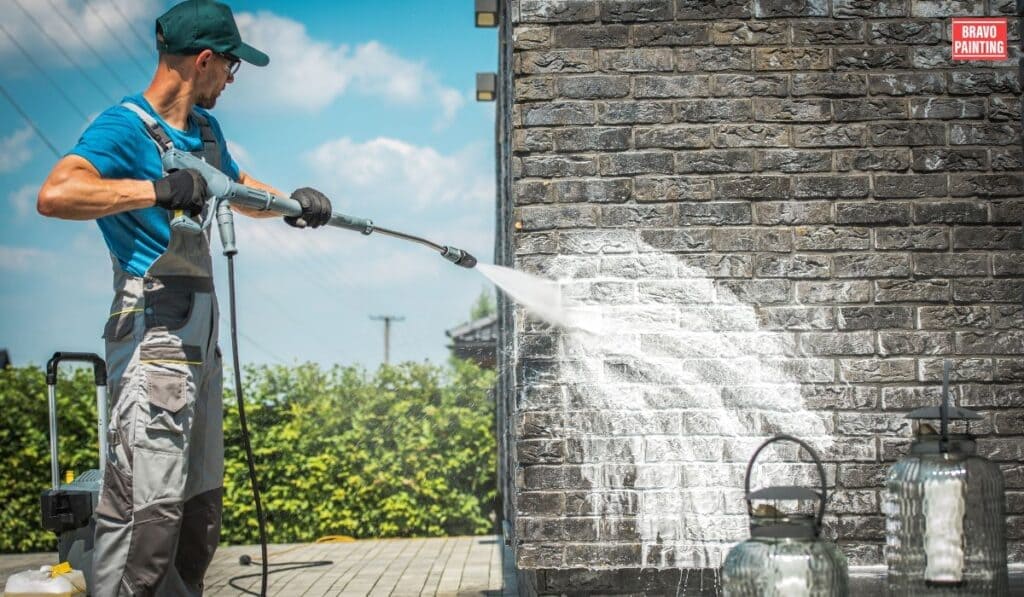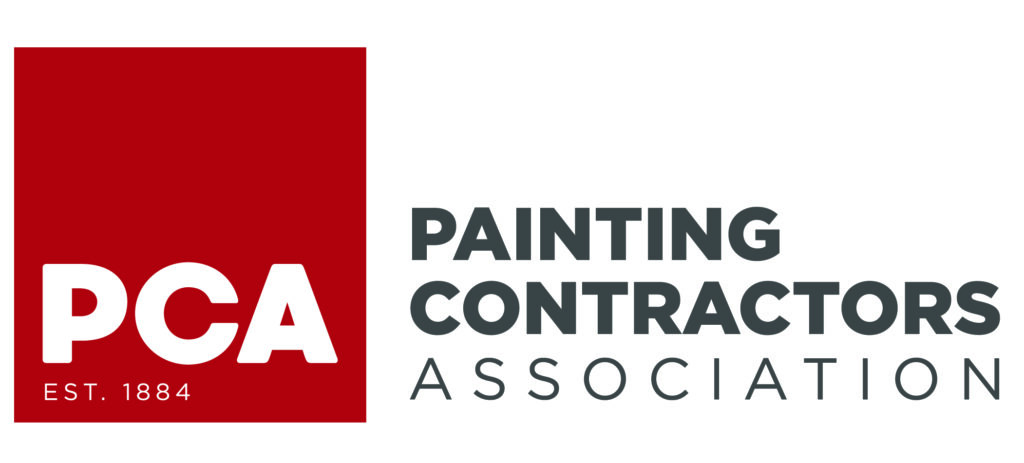Stubborn stains on your home are like some people: they never disappear.
It can be mold algae, or dirt accumulation; these unsightly marks both detract from and damage the exterior aesthetic of your property in the long term if left untreated.
You might have heard about low-pressure house washing as a solution, but you wonder if it works.
Cleaning techniques vary and can be overwhelming, ranging from blasting with very high power to gentle techniques for sensitive surfaces.
Knowing how best to tackle the most severe stains takes a lot.
This guide covers low pressure house washing in-depth and aims to help you decide if it’s the best option for your stain removal needs.
Take back the beauty of your home exterior by reading on!
What is Pressure Washing?

One of the most robust cleaning methods is pressure washing, which uses a powerful spray of water at high pressure.
It cleans surfaces by removing dirt, grime, and other debris.
The technique is often applied to driveways, sidewalks, decks, and siding.
The pressure washer can dislodge substances that cannot be removed with scrubbing alone.
Most equipment has a motorized pump attached to a wand or nozzle, which can be easily adjusted to the desired pressure level and spray pattern for specific surfaces.
High pressure is perfect for concrete and bricks but inappropriate for sensitive materials.
Understanding how pressure works is essential to achieve effective results without scarring surfaces.
Many surfaces react differently to varied pressures, and if too much force is applied to softer materials like wood or vinyl, they may scar or warp.
Another feature of pressure washing is selecting the proper detergents or cleaning solutions when applicable.
Mixing chemical agents with water can enhance the effectiveness against tough stains and reduce physical effort.
Safety is a significant consideration with these devices.
Wearing protective gear like eye protection and gloves shields you from debris and splashes, enhancing your cleaning experience.
Understanding Soft Washing vs. Regular Pressure Washing
Soft or low pressure house washing and regular pressure washing serve different cleaning needs.
Regular pressure washing uses high-pressure water jets to blast away dirt, grime, and stains from hard surfaces.
It works effectively with rigid materials such as concrete or brick but can be too harsh for softer surfaces.
Conversely, soft washing employs a low-pressure water stream with cleaning solutions.
This method is ideal for delicate surfaces such as roofs, wood siding, or painted areas, minimizing the risk of damage while still removing mould and mildew.
The appropriate method often depends on the type of stain that needs attention.
Heavy-duty stains may require regular pressure washing for effective removal, while softer stains respond well to the gentler approach of soft washing.
Safety is also a key consideration.
High-pressure techniques can easily cause damage if mishandled; they can strip paint or etch glass surfaces if not carefully controlled.
Soft washing significantly minimizes these risks.
Understanding these differences helps homeowners make informed decisions about maintaining their exteriors, preserving appearance, and preventing unintended damage.
Advantages and Disadvantages of low pressure Washing for Stubborn Stains
Low pressure washing is specialized for handling stubborn stains.
This gentle approach uses low pressure while applying cleaning solutions that remove dirt and marks like mould or algae without harming delicate surfaces, such as roofs or painted walls.
Low pressure washing offers long-lasting results.
The biodegradable soaps not only clean but also prevent future mildew or algae growth, reducing the frequency of necessary cleanings and saving time and money.
However, not all situations are suitable for soft washing.
Tough stains like oil or heavy rust may be too persistent for this approach alone, requiring homeowners to use other methods.
Soft washing is highly effective on surfaces like wood and vinyl siding, though some materials may absorb too much moisture if left untreated for too long.
Therefore, selecting the appropriate method based on your property’s materials is essential.
Because soft washing requires specialized knowledge and equipment, hiring a professional is sometimes necessary to achieve optimal results.
This additional expense may deter some homeowners, despite the benefits of this method.
Differences Between Low-Pressure and High-Pressure Washing
Low-pressure and high-pressure washing serve distinct purposes, each with specific strengths.
Low-pressure washing typically operates between 1000 to 1500 PSI, a gentle level that effectively removes dirt and grime without damaging delicate materials like painted surfaces or wood decks.
High-pressure washing, on the other hand, also known as power washing uses much greater force, often at 3000 PSI or more.
This level of power is excellent for tough stains on durable surfaces like concrete driveways or brick walls.
However, the high pressure also poses risks, as improper use can erode surface finishes or strip off paint.
Another significant difference lies in cleaning agents.
Low-pressure washing frequently employs special cleansers that dissolve severe stains without damaging underlying surfaces, while high-pressure washers may rely solely on water pressure, though sometimes chemical agents are necessary for tougher jobs.
These techniques also vary in time.
Low-pressure cleaning generally takes longer but offers longer-lasting results when applied correctly, whereas high-pressure techniques are quicker but may require more frequent cleaning if not properly used.
Understanding these differences enables homeowners to choose the best option for their specific stains and surface types.
Things to Consider Before Choosing Low-Pressure Washing
Several factors should be considered before selecting low-pressure washing.
The type of surface involved is crucial, as different materials respond differently to the cleaning process.
For example, wood and vinyl siding benefit from gentler approaches, while concrete can handle more robust methods.
The type of stain is also important.
Some stains may require cleaning solutions that low-pressure water alone cannot remove.
Grease or mould, for example, might require special solutions in addition to low-pressure techniques.
Environmental factors, like wind and temperature, also play a role.
Windy or hot conditions may cause cleaning agents to dry up too quickly before stains are lifted.
Safety is essential as well.
While low-pressure washing is gentler, it still requires protective gear for the person doing the job, whether that’s you or a hired professional.
Budget is always a consideration.
Low-pressure washing may save money over high-pressure options and reduce the need for future repairs.
However, avoid unqualified providers who may compromise quality for a lower price.
Selecting the Right Professional for Your Stain Removal Needs
Hiring a qualified professional is crucial for low-pressure house washing services.
If you’re searching for “low pressure house washing near me” or “exterior house washing near me,” you need someone knowledgeable about soft and regular pressure washing techniques who can accurately identify and address the stains around your home.
Check the professional’s qualifications.
Verify their accreditations or memberships in reputable industry organizations to ensure they adhere to best practices and safety standards.
Customer reviews can also provide insight into their reliability and effectiveness.
Experience is key in this business.
Look for a professional with experience handling stubborn stains, like mildew or grease, and familiarity with a variety of surfaces.
A skilled professional will listen to your concerns, answer questions clearly, and explain their approach in layperson’s terms.
Obtain quotes from at least two professionals before deciding.
Also search for local house washing
While you shouldn’t automatically choose the cheapest option, comparing estimates helps you gauge a reasonable price for quality service tailored to your needs.
Conclusion
Low pressure house washing can be a game changer for those stubborn stains.
Many homeowners are unaware of how effective this method can be.
It combines the benefits of old-school techniques with gentler, modern methods, making it suitable for a variety of surfaces.
Understanding the specifics of low-pressure washing is crucial.
This approach employs special equipment and biodegradable detergents to lift dirt and grime gently, preserving the condition of delicate surfaces like roofs or painted areas.
Consider the types of stains you need to remove, as mould, mildew, algae, and even rust may require specific removal techniques.
Low-pressure washing is often ideal for handling these issues without compromising surface integrity.
Choosing the right service provider is essential, as not all professionals have the same level of expertise.
A trained professional can restore your home’s exterior beautifully while protecting its longevity.
The results improve curb appeal and help maintain a healthy environment, free from allergens and pollutants.
FAQs
What is low-pressure house washing?
Low-pressure house washing is a soft spray that cleans surfaces without using a high-pressure force that might cause harm to materials. It is very effective for cleaning sensitive areas like roofs and siding.
Is low-pressure washing effective for the removal of mold and mildew?
Absolutely, yes. Low-pressure washing removes mold and mildew on various surfaces by combining lower water pressure with specialized cleaning agents.
How does soft washing differ from traditional power washing?
Soft washing uses a chemical solution that breaks loose at lower pressures rather than the high-pressure water jetting of traditional power washing. This makes it ideal for delicate surfaces that could be damaged by intense force.
Is low pressure safe for my exterior home?
It is generally safe, mainly when handled by professionals who know how to use the proper techniques for various materials. However, one needs to ensure they apply the right chemicals suited for your home needs.
When should I rinse my house with low pressure?
Once a year or every two years is enough to maintain looking their best for most exteriors, still, factors like climate and location and the surface material can determine otherwise.



